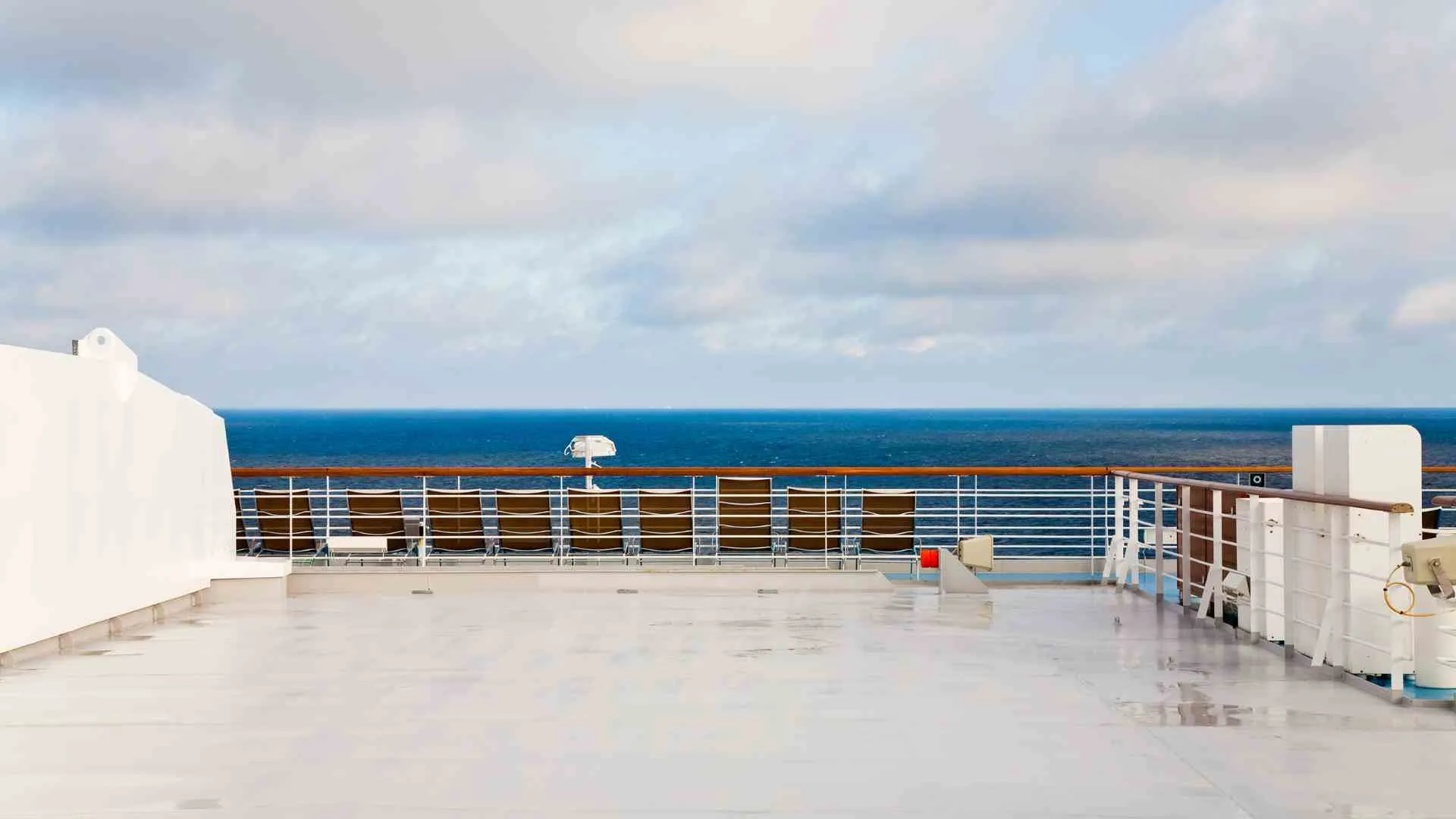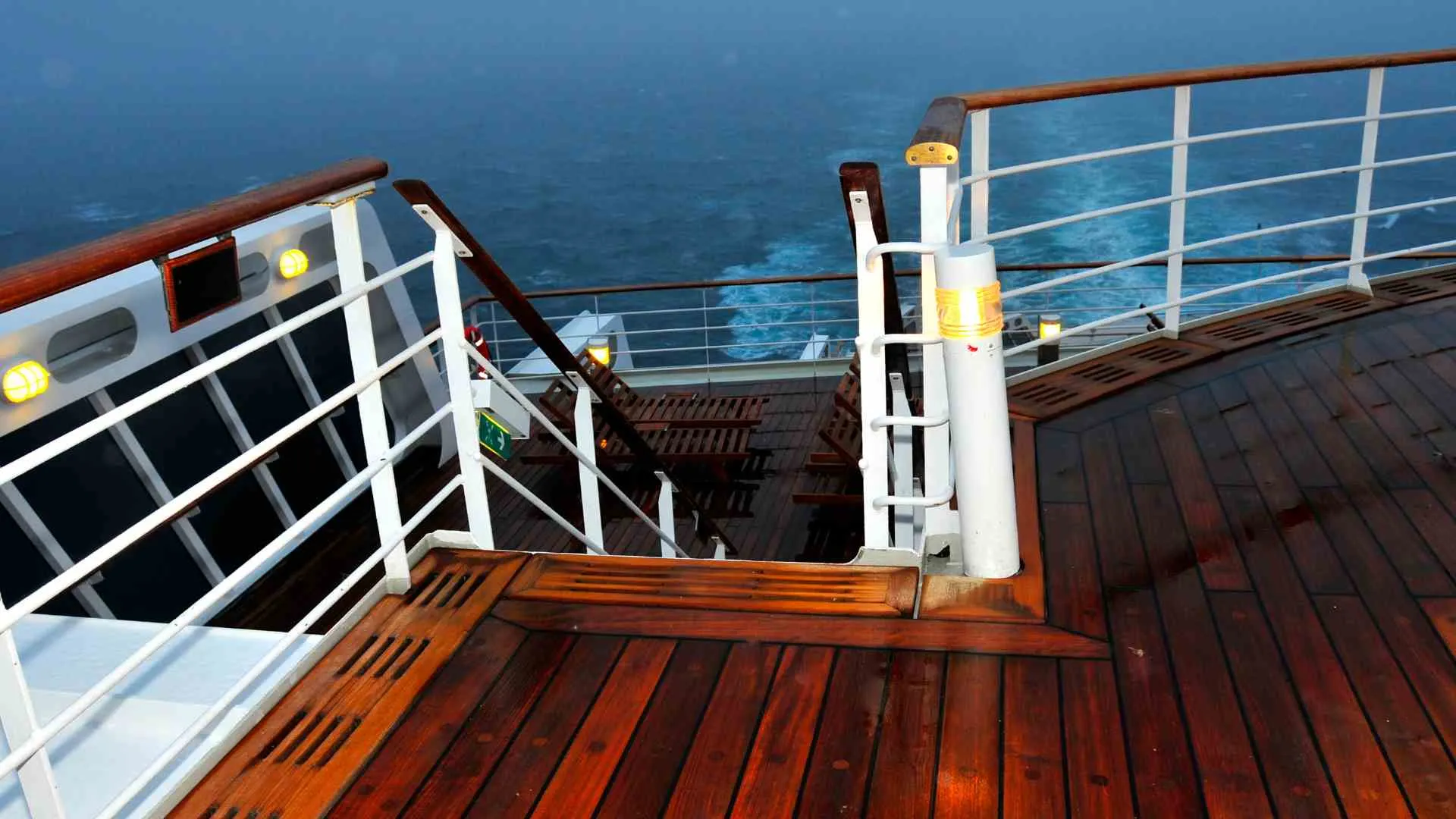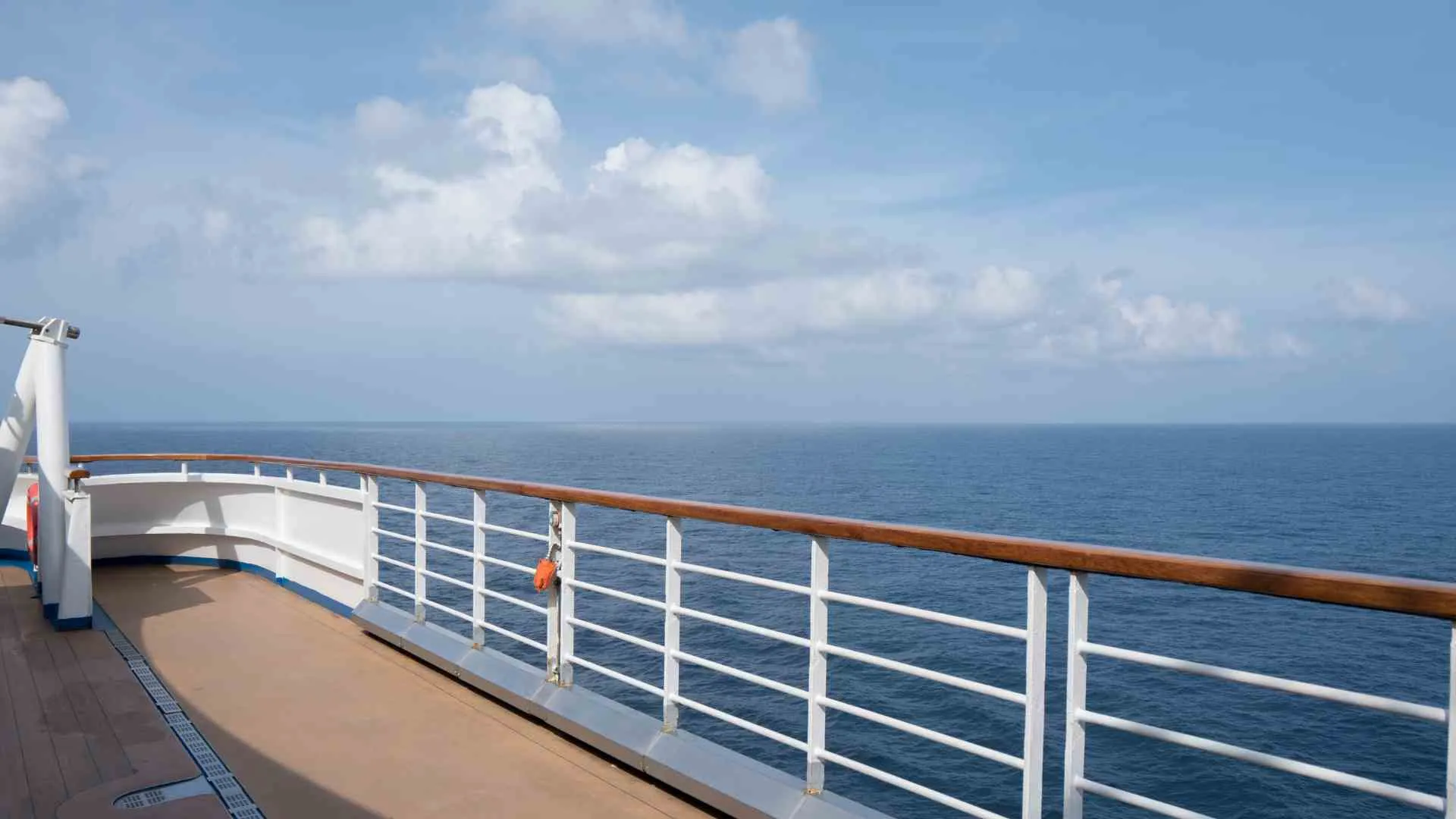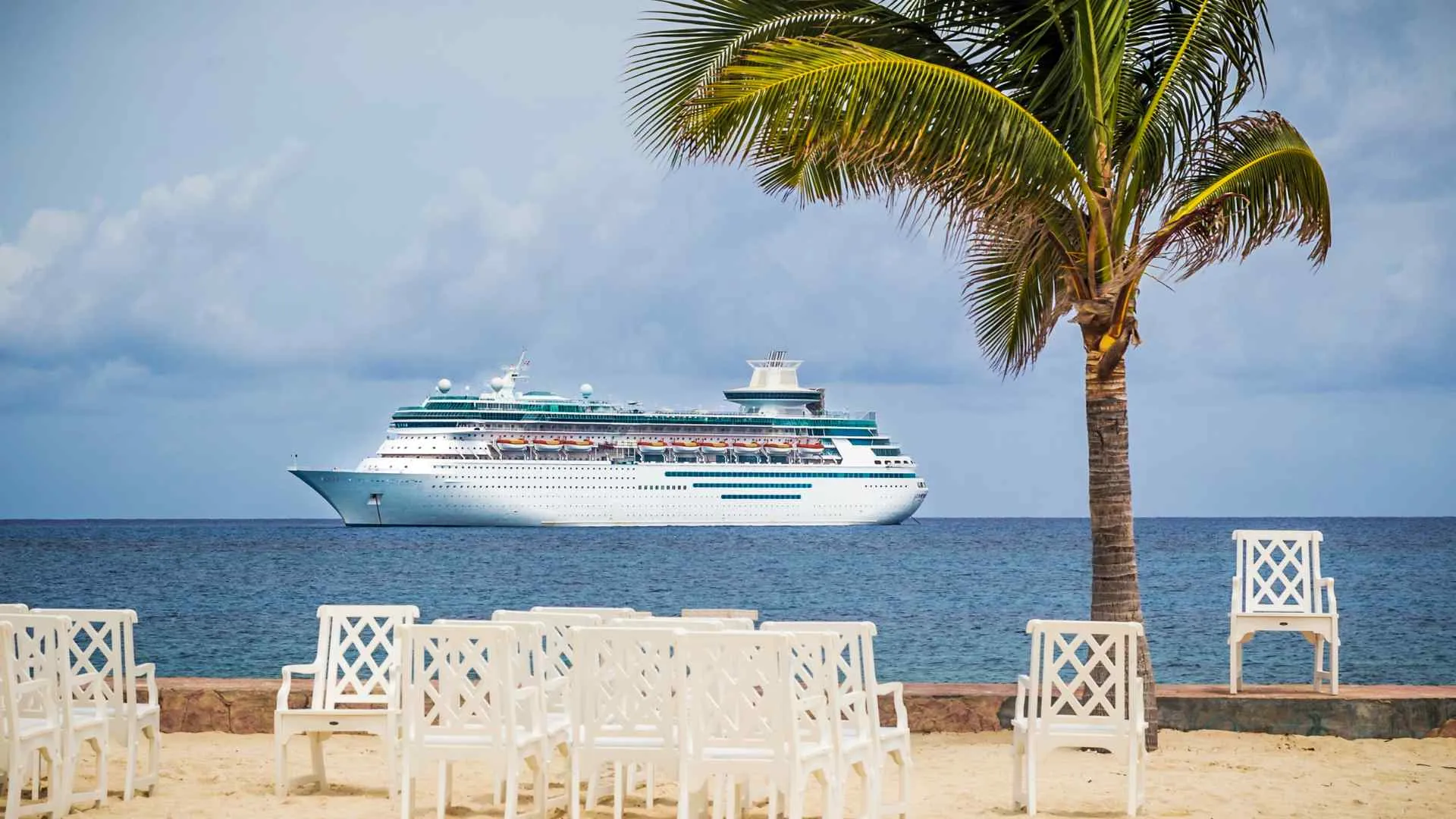Embark on a journey through maritime history as we explore the intriguing world of poop decks. This guide delves into the origins, evolution, and multifaceted roles of these iconic features of seafaring vessels.
Poop decks, more than just a part of a ship deck plan, have shaped navigational techniques and maritime culture throughout the ages.

What is the function of the poop deck?
The poop deck, traditionally the highest deck at a ship’s stern, serves primarily for navigation and observation.
It offers a commanding view for the ship’s officers to oversee navigation and manage the vessel’s operations effectively.
What equipment is on the poop deck?
Historically, the poop deck housed essential navigational equipment like the ship’s wheel, compass, and sextant.
In modern ships, it may include advanced navigational aids, communication devices, and sometimes leisure facilities for crew and passengers.
Where is the poop deck?
The poop deck is located at the rear (stern) of a ship, typically elevated to the highest level.
This strategic positioning allows for an unobstructed view over the ship’s wake and facilitates efficient navigation and command.
What is the meaning of poop deck?
The term ‘poop deck’ originates from the Latin word ‘puppis,’ meaning the rear or stern of a ship.
It specifically refers to the deck that forms the roof of a cabin built in the rear or the aft part of the superstructure of the ship.

Introduction to Poop Decks
Definition and Origin of the Term
The term ‘poop deck’ holds a unique place in maritime vernacular. Derived from the Latin word ‘puppis‘, it refers to the deck situated at the stern (rear) of a ship.
Historically, this deck is elevated, positioned over the ship’s cabin at the stern. It’s a term that dates back to the era of large sailing ships and has since become ingrained in nautical language.
Brief Overview of Its Significance in Maritime History
The poop deck is more than a structural element; it’s a symbol of navigation and command. Throughout maritime history, it has played a pivotal role in the operation of ships.
From the commanding heights of the poop deck, captains and officers would navigate treacherous waters, keeping a watchful eye on the sea and their crew.
This deck, often the highest point on a ship, provided a strategic vantage point, crucial for both navigation and overseeing ship activities.
Its evolution and design reflect the broader changes in shipbuilding and seafaring practices over centuries, making it a key element in understanding maritime heritage.

Historical Evolution of Poop Decks
Early Maritime Cultures and Their Ship Designs
The concept of a raised deck at the stern can be traced back to early maritime cultures.
Ancient civilizations, such as the Greeks and Romans, designed their ships with functionality and hierarchy in mind, which led to the development of elevated areas for navigation and command.
These early designs set the precedent for the poop decks seen in later sailing vessels.
Development of Poop Decks in Sailing Ships
During the Age of Sail, from the 15th to the 18th century, ship design evolved significantly, and the poop deck became a standard feature in large vessels.
It was during this era that the poop deck’s role in navigation and ship management became firmly established.
Ships like the Spanish galleons and British naval ships exemplified the use of poop decks as critical navigational posts.
Notable Historical Ships with Prominent Poop Decks
Famous ships throughout history have featured prominent poop decks. The HMS Victory, Lord Nelson’s flagship at the Battle of Trafalgar, is a prime example.
Another is the Mayflower, which carried Pilgrims to the New World in 1620. These ships highlight the poop deck’s importance in maritime history and its evolution over time.
Each vessel’s design reflects the technological and navigational advancements of its era, showcasing the poop deck’s role in seafaring achievements.

Anatomy of a Poop Deck
Structural Description and Location on a Ship
The poop deck, characteristically located at the stern, is the uppermost deck of a ship. It extends from the ship’s rear to the mainmast, forming the roof of the aft cabin.
This elevation is not only for commanding views but also serves to keep the deck dry from the ocean’s spray. Its structural design has varied throughout history, adapting to the evolving needs of maritime navigation.
Materials and Construction Techniques (Historical vs Modern)
Historically, poop decks were constructed using durable woods like oak or teak, chosen for their resistance to the harsh marine environment.
The construction techniques reflected the shipbuilding knowledge of the era, often involving intricate carpentry and joinery.
In contrast, modern ships might use a combination of steel, composites, and advanced materials, focusing on strength, durability, and reduced maintenance.
Comparative Analysis with Other Parts of a Ship
Unlike the bustling lower decks where the crew lived and worked, the poop deck was primarily reserved for the ship’s officers and navigation.
It contrasts with the foredeck, which is located at the front of the ship and often used for handling sails, anchorage, and mooring.
The layout of the poop deck, elevated and somewhat isolated, underscores its strategic importance in ship operation and navigation, distinguishing it from other parts of the ship both functionally and symbolically.

Functions and Uses of a Poop Deck
Navigational Role in Historic Sailing
The primary function of the poop deck in historical sailing was for navigation.
Positioned at the highest and aftmost part of the ship, it offered an unobstructed view of the sea and the ship’s sails, crucial for steering and monitoring the vessel’s course.
The captain and officers would use this vantage point to read the sea, winds, and weather, making critical decisions about the ship’s direction and sail adjustments.
Social and Ceremonial Uses in Maritime Tradition
Beyond its navigational purpose, the poop deck also had social and ceremonial significance.
It was often the site of important shipboard activities such as ceremonies, officer meetings, and as a place of leisure for the ship’s elite.
In naval ships, it was a place of honor where dignitaries and high-ranking officers would be entertained, highlighting the deck’s status and importance in the social hierarchy of a ship.
Modern Adaptations and Uses in Contemporary Ships
In modern ships, while the traditional navigational role of the poop deck has diminished due to technological advancements, it still holds functional and symbolic significance.
On many contemporary vessels, the area is adapted for leisure activities, like observation decks on cruise ships, offering passengers panoramic views.
In some naval and commercial ships, it continues to serve as a command and control center, albeit equipped with modern navigation and communication systems.
The evolution of the poop deck’s use reflects the changing nature of seafaring, balancing tradition with modern maritime needs.

Poop Decks in Maritime Culture and Literature
Representation in Nautical Folklore and Songs
The poop deck has a storied presence in nautical folklore and songs, often symbolizing adventure, authority, and the romance of the sea.
In sailor shanties and maritime tales, the poop deck is frequently mentioned as a place of command and decision-making, embodying the spirit of naval leadership and the challenges of seafaring life.
Poop Decks in Classic and Modern Literature
Literature has immortalized the poop deck in many classic maritime narratives.
In novels like Herman Melville’s “Moby Dick” and Robert Louis Stevenson’s “Treasure Island,” the poop deck is a stage for pivotal moments in the story, from harrowing battles to contemplative scenes gazing out to sea.
These literary depictions have cemented the poop deck’s iconic status in the collective imagination, bridging historical truth with narrative myth.
Symbolism and Metaphorical Uses in Popular Culture
In popular culture, the poop deck often serves as a metaphor for oversight, control, and a bird’s-eye view of situations, drawing on its historical use as a lookout and command post.
Its portrayal in films, television, and other media typically emphasizes themes of leadership and perspective, echoing the deck’s maritime heritage.
The term has even entered colloquial language, sometimes used humorously or in metaphorical expressions, showcasing its enduring impact on language and culture.
Historic Navigational Instruments and Their Use on the Poop Deck
In the age of sail, the poop deck was central to navigation. It housed key instruments like the compass, sextant, and later, the chronometer.
These tools allowed officers to determine the ship’s position and chart its course. The elevated position of the poop deck was ideal for celestial navigation, as it provided an unobstructed view of the sky and horizon.
Evolution of Navigational Techniques Over Time
Navigation techniques have evolved dramatically from the era of celestial navigation to today’s GPS and radar systems. Initially, mariners relied on the stars, sun, and landmarks for navigation.
The introduction of the magnetic compass and sextant revolutionized seafaring, making ocean voyages more precise and safer. With the advent of electronic navigation, the role of the poop deck shifted.
While it remains an important lookout point, modern technology has largely replaced the traditional tools once used there. This evolution reflects the broader technological advancements in maritime history, showcasing how innovation has transformed seafaring.

Preservation and Restoration of Historic Poop Decks
Case Studies of Restored Ships
The restoration of historic ships, including their poop decks, provides valuable insights into maritime history.
For instance, the restoration of the HMS Victory in the UK and the USS Constitution in the USA involves meticulous work to preserve their original structure, including the poop deck.
These projects not only maintain the ships’ physical integrity but also keep alive the stories and history associated with them.
Techniques and Challenges in Preservation
Preserving a poop deck requires specialized techniques. Experts use a combination of traditional craftsmanship and modern technology to restore and maintain the woodwork and structural integrity.
The biggest challenges include dealing with the effects of weather, age, and ensuring the materials used are as close as possible to the original.
This process often involves extensive research and sometimes even archaeological methods to uncover the original designs and materials.
The Role of Museums and Maritime Heritage Organizations
Museums and maritime heritage organizations play a crucial role in preserving historic ships and their poop decks. They undertake conservation projects, conduct research, and educate the public about maritime history.
These organizations also often collaborate with governments and private entities to secure funding and support for these complex restoration projects.
Through their efforts, the history of ships and their unique features like the poop deck are preserved for future generations to learn from and appreciate.

Interesting Facts and Anecdotes About Poop Decks
Famous Incidents and Stories
Throughout history, poop decks have been the backdrop for numerous famous incidents and stories. For instance, the mutiny on the HMS Bounty in 1789 unfolded on its poop deck, a pivotal moment that has been immortalized in literature and film.
Another notable example is the signing of the Japanese Instrument of Surrender on the poop deck of the USS Missouri in 1945, marking the end of World War II in the Pacific.
Unusual Designs and Uses in Maritime History
Some ships featured uniquely designed poop decks that served specific purposes.
The Spanish galleon, known for its elaborate and ornate poop decks, used this space not just for navigation but also as a platform for commanding troops during naval battles.
In contrast, the Viking longships lacked a traditional poop deck but had a similar elevated area at the stern for the helmsman, illustrating the diversity in ship design across cultures and time periods.
These fascinating facts and anecdotes underscore the rich and varied history of poop decks, revealing their significance beyond mere structural elements of ships. They offer a glimpse into the maritime past, filled with adventure, conflict, and innovation.
Conclusion
The Enduring Legacy of Poop Decks in Maritime History
The poop deck, a small but significant part of a ship, has played a crucial role in maritime history. Its evolution from a simple raised platform to a sophisticated command center reflects the advancements in shipbuilding and navigation techniques over centuries.
The poop deck’s enduring legacy lies in its contribution to the safety and efficiency of seafaring, as well as its symbolic presence in maritime culture and literature.
Reflection on How They Shaped Seafaring Culture and Navigation
As we reflect on the history and significance of poop decks, it becomes clear that they are more than just a physical structure.
They represent the ingenuity of maritime design, the bravery of sailors navigating uncharted waters, and the evolution of seafaring culture.
From the age of exploration to modern-day voyages, the poop deck has been a silent witness to human endeavors on the high seas, encapsulating the essence of maritime heritage.
FAQs on Poop Decks
1. What exactly is a poop deck on a ship?
- The poop deck is the deck located at the stern (rear) of a ship, typically the highest and aftmost deck. It’s been historically used for navigation and overseeing the ship’s operations.
2. Why is it called a ‘poop deck’?
- The term originates from the Latin word ‘puppis,’ meaning the stern or aft part of a ship. The term evolved in nautical terminology to specifically refer to the deck located at the rear of the ship.
3. How did sailors use the poop deck?
- Sailors, especially ship officers, used the poop deck for navigating and managing the ship. Its elevated position provided a clear view for steering and monitoring the ship’s course, as well as overseeing the crew’s activities.
4. Are poop decks still found on modern ships?
- While traditional poop decks are less common on modern vessels, many ships still have a designated area at the stern that serves similar functions, such as an observation or command deck.
5. Can visitors access the poop deck on historical ships?
- Yes, on many restored historical ships that are open to the public, visitors can access the poop deck. This allows them to experience a part of maritime history and see the views that ship officers would have had.
6. What kind of equipment was typically found on a poop deck?
- Historically, the poop deck housed navigational equipment like the ship’s wheel, compass, and sextant. In modern times, it might include advanced navigation systems, communication devices, and sometimes leisure facilities.
7. How is a poop deck different from other decks?
- The poop deck is distinct due to its location at the stern and its elevation, which provides a strategic vantage point for navigation and command, differentiating it from other decks used primarily for crew activities or cargo storage.
8. Has the function of the poop deck changed over time?
- Yes, the function of the poop deck has evolved with advances in ship
building and navigation technology. While it was once essential for navigation and ship management, modern technology has largely replaced these functions.
However, it still holds symbolic and practical importance in various roles, such as an observation area or a social space on contemporary ships.
9. What role did the poop deck play in historical naval battles?
- In historical naval battles, the poop deck was crucial for commanding the ship and coordinating maneuvers during combat. Its high vantage point allowed officers to oversee the battle and make strategic decisions, often under intense circumstances.
10. How is the poop deck preserved in maritime museums?
- Maritime museums preserve poop decks as part of their historic ship exhibits. They use a combination of traditional restoration techniques and modern conservation methods to maintain the deck’s authenticity and integrity. These preservation efforts help educate the public about the ship’s history and the role of the poop deck in maritime heritage.
11. Can the poop deck be customized on private vessels?
- Yes, on private vessels, the poop deck can be customized to suit the owner’s preferences. This might include leisure amenities, personalized navigation equipment, or design elements that reflect individual tastes and usage needs.
12. Were there any cultural or social norms associated with the poop deck?
- Historically, the poop deck was often reserved for the ship’s officers and dignitaries, reflecting social hierarchies at sea. It was a place of command and sometimes used for ceremonial purposes, underscoring its importance in shipboard life.
13. How did weather conditions affect the use of the poop deck?
- Weather greatly influenced the use of the poop deck. In fair conditions, it was the prime location for navigation and overseeing ship operations. However, in rough seas or bad weather, accessibility and use could be significantly hampered due to its exposed location.
14. Are there any famous literary references to poop decks?
- Yes, poop decks feature in several famous literary works. For example, in “Moby Dick” by Herman Melville, the poop deck is mentioned as a lookout point. Such references have helped cement the poop deck’s place in cultural and literary history.
15. What safety measures were typical on poop decks in the past?
- In the past, safety on the poop deck, especially during rough seas, involved using ropes or railings to prevent falls. The elevated position of the deck required extra caution to ensure the safety of the crew and officers.
16. How does the design of a poop deck vary between different types of ships?
- The design of the poop deck varies depending on the ship’s size, type, and purpose. On large naval ships, it’s more elaborate and functional for navigation, while on merchant or leisure vessels, it might be simpler and geared towards cargo management or passenger enjoyment.
17. What is the maintenance routine for a poop deck?
- Maintenance routines for poop decks involve regular cleaning, checking for and repairing any structural damage, and treating the deck to protect against the elements, especially on wooden decks. Modern materials require less maintenance but still need regular inspections.
18. Has the poop deck influenced modern ship design in any way?
- Yes, the concept of the poop deck has influenced modern ship design, especially in terms of providing a high vantage point for navigation and observation. Its historical significance also influences the aesthetic and functional aspects of ship design.
